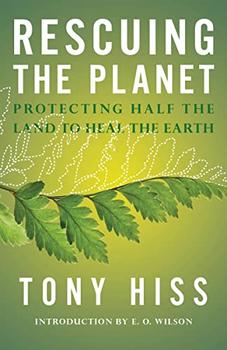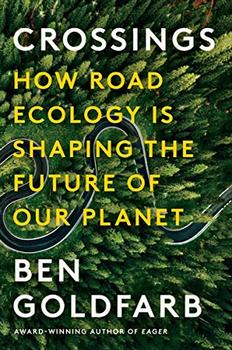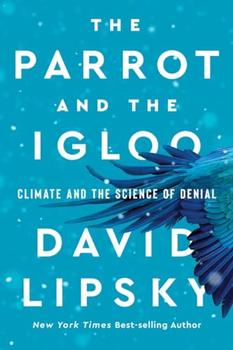Summary | Excerpt | Reviews | Beyond the book | Read-Alikes | Genres & Themes | Author Bio

Critics' Opinion:
Readers' Opinion:
First Published:
Mar 2021, 320 pages
Paperback:
Mar 2022, 320 pages
 Book Reviewed by:
Book Reviewed by:
Norah Piehl
Buy This Book
We all have heard a lot about the urgent need for countries, corporations and individuals to act on climate change (and rightly so!). That problem is dire and is not going away anytime soon. But, as journalist and former New Yorker writer Tony Hiss notes in his new book Rescuing the Planet, the climate emergency is only part of the story when we talk about the current crises facing the Earth. "As a direct result of humanity's destructive actions on the landscape," Hiss writes, "1 million species of plants and animals are likely to go extinct, many within the next few decades." This massive reduction in biodiversity has been referred to as the sixth extinction (meaning the sixth instance in our planet's history of a "mass extinction," an event in which a majority of species are wiped out). However, as Hiss splendidly outlines, there is one possible human-led path to drastically altering this not-yet-inevitable outcome.
The suggestion, championed by organizations such as the Half-Earth Project, Nature Needs Half and the Wyss Campaign for Nature, proposes protecting as much as 50 percent of the world's land for plants and animals by the year 2050 (according to the World Bank, North America is less than 15 percent protected now, so we have a long way to go). According to projections by biologist E.O. Wilson and others, this goal could help ensure the survival of up to 90 percent of species—versus only 25 percent if we stick to the status quo.
Obviously, this is a lofty ambition, but Hiss takes the clever approach of making a fairly abstract, seemingly unrealistic goal more concrete by introducing readers to scientists, naturalists and activists who are already helping to achieve it in a variety of landscapes and locations. Perhaps most ambitious is the group to whom Hiss first introduces us, an inspiring coalition of First Nations Dene leaders ("First Nations" is a Canadian term referring to a grouping of indigenous peoples, including the Dene), scientists and environmental activists working to preserve the critically important boreal forests of northern Canada and Alaska, using their unique knowledge and viewpoints to integrate human settlement and vast regions of undeveloped territory for animals and plants. The project offers critical leadership roles for Native people, a model that Hiss suggests could be expanded.
Among the most illuminating aspects of the book are the arguments around migration. The United States' National Park system, while a true treasure, doesn't achieve close to what's needed to safeguard animal migrations, which are often vast and wide-ranging and don't abide by human-set boundaries. When relatively small areas of protected land are surrounded by development, the number of species that can survive and thrive in them is drastically reduced. Hiss outlines the work of activists and organizations striving to create, for example, a "Yellowstone to Yukon" (Y2Y) conservation corridor that will link together vast swathes of protected land in the western United States and Canada, expanding the range for migratory animals and enhancing the entire region's capacity to provide habitat for a greater number of species. This type of work can also be seen on a smaller scale, as Hiss profiles initiatives to expand the buffer zones around man-made paths, like the Appalachian Trail, and to link them together, thereby creating networks of green spaces—essentially linear parks—that can effectively serve humans and other species alike.
Hiss additionally offers eye-opening evidence of the surprising ways in which animals and plants can affect one another when allowed to move freely and repopulate once-wild areas. When wolves were reintroduced to their historic territory in Yellowstone, for instance, the resulting change in elk behavior (previously they had grazed in open meadows without fear but now hung close to the forest's edge for protection) transformed the landscape. Over-grazed meadows began to sprout and grow trees, which in turn brought back another species to the area—the beaver, whose dam-building will undoubtedly further affect the landscape and the area's species diversity. Stories like these have the potential to spark readers' imaginations about how our world could be improved by ambitious proposals such as the one Hiss outlines.
In addition to anecdotes from the author's travels in remote or rural areas, readers can be inspired by land preservation success stories ranging from suburban Boston (see Beyond the Book) to New York City. The challenge is in accelerating the progress that's already been made and linking together existing projects into a more cohesive whole. Rescuing the Planet focuses almost entirely on North America, though Hiss does make mention of projects and challenges in South America, Australia and Antarctica, as well as the United Kingdom. It might have been interesting to see more comparison between North America and other regions struggling to balance population density with land preservation for wildlife. Readers also may wish Hiss had included more specifics on how the aspirations in this book might, if achieved, help combat climate change as well—he does bring this topic up at a couple of points, but not in any great depth.
Hiss closes with three inspirational chapters. The first shows a series of short portraits of people doing the type of work explained in the book. The second includes a helpful list of organizations and initiatives readers can turn to if they want to help fund this work or get involved in other ways. And finally, Hiss closes by asking many of the people whose work he's profiled about their "spark bird"—the wildlife experience that got them excited about devoting their lives to the natural world. These moving words will almost certainly prompt readers to remember their own foundational moments in nature—and spark enthusiasm about saving wild places for future generations of animals, plants and humans, too.
![]() This review was originally published in The BookBrowse Review in April 2021, and has been updated for the
April 2022 edition.
Click here to go to this issue.
This review was originally published in The BookBrowse Review in April 2021, and has been updated for the
April 2022 edition.
Click here to go to this issue.

If you liked Rescuing the Planet, try these:

by Ben Goldfarb
Published 2024
An eye-opening account of the global ecological transformations wrought by roads, from the award-winning author of Eager.

by David Lipsky
Published 2024
The New York Times best-selling author explores how "anti-science" became so virulent in American life—through a history of climate denial and its consequences.





The Funeral Cryer by Wenyan Lu
Debut novelist Wenyan Lu brings us this witty yet profound story about one woman's midlife reawakening in contemporary rural China.
Your guide toexceptional books
BookBrowse seeks out and recommends the best in contemporary fiction and nonfiction—books that not only engage and entertain but also deepen our understanding of ourselves and the world around us.